Telecommunications or Telecom means communicating over long distances – the exchange of information by voice, video, data, and any other type of transmission over considerable distances. Modern telecom refers to any long-distance communication using electronic means, but the term may also include all non-electronic forms, as long as it covers a greater than shouting distance from transmitter to receiver.
Modern telecommunications includes several types of long-distance data-transmitting technologies such as fiber optics, satellites, telephones, radio broadcasting, TV broadcasting, telegraphs and the Internet.
The term may be used in its plural or singular – telecommunication – form.
A typical telecommunications arrangement includes at least two stations equipped with devices for transmitting and receiving data. A transceiver – a single co-arrangement of transmitters and receivers – is often used in many types of telecommunication stations.
Modern telecommunications started when the telegraph was invented in 1837 and was followed by the telephone in 1876. The late 1800s saw the advent of radio broadcasts, with TV broadcasts arriving in the early 1900s.
In telecommunications today, data is transmitted either electrically along cables, or via electromagnetic radiation.
Early forms of telecommunications
One of the oldest form of telecommunications is the smoke signal, which has been used across the world for tens of thousands of years to inform about danger, transmit news, or call people to assemble somewhere.
Soldiers were stationed along the Great Wall in ancient China, where they would alert each other of impending enemy attacks by sending smoke signals from tower to tower.
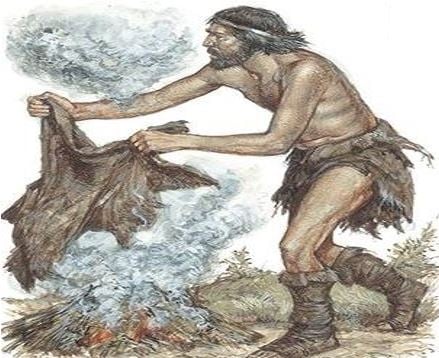 Telecommunications dates back tens of thousands of years when humans used smoke signals. (Image: uk.pinterest.com/pin)
Telecommunications dates back tens of thousands of years when humans used smoke signals. (Image: uk.pinterest.com/pin)
The Ancient Greek historian Polybius (c. 200 – c. 118 BC) devised a system of alphabetical smoke systems, which converted Greek characters into numeric ones, thus enabling messages to be signaled using sets of torches in pairs. Germany used the ‘Polybius square’ in WWI.
The indigenous peoples of North America communicated using smoke signals. Each tribe had its own smoke-signal language. They used damp grass, which would cause a column of dense smoke to rise
Beacons have been used for hundreds of years as lighthouses for navigation at sea, and also for alerting allies over land that enemy troops or ships were approaching.
Beacons were commonly used in a relay system and were capable of transmitting data over considerable distances.
The Brecon Beacons in Wales were used to warn of the imminent approach of English raiders. Beacons were used along the Elizabethan English coast to warn of the approaching Spanish Armada.
Flag signals were commonly used, before the invention of the radio, by ships to communicate. They are still used if radio communications break down.
Homing pigeons have been used throughout history globally. Pigeon post is believed to have started in Ancient Persia, and was extensively used by the military in Ancient Rome.
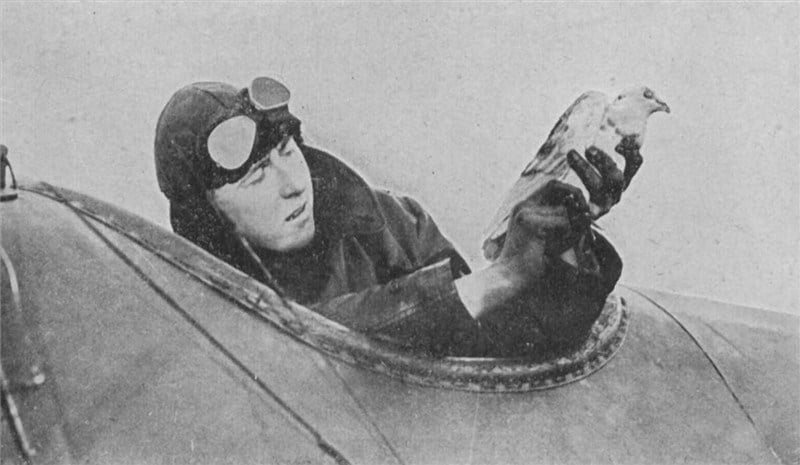 A British pilot with a carrier pigeon in WWI. Pigeon post was used by the military across Europe during the First World War. (Image: firstworldwar.com)
A British pilot with a carrier pigeon in WWI. Pigeon post was used by the military across Europe during the First World War. (Image: firstworldwar.com)
Humans have used a wide range of visual or auditory signals, including drumbeats, lung-blown horns, and loud whistles to communicate over long distances.
A major telecommunications breakthrough came in 1451, with the advent of mass communication. Johannes Gutenberg (1398-1468), a German goldsmith, invented the printing press. The technology introduced concepts that people today associate with the Internet – universal access to knowledge, a one-to-many motored communication, and mobile information.
20th century telecommunications
During the 20th century there was a revolution in wireless communications, which started with Guglielmo Marconi’s pioneering developments in radio communication. Marconi (1874-1937), an Italian inventor and electrical engineer, was awarded the Nobel Prize in Physics for his work in 1909.
During the latter half of the 19th century and the first quarter of the 20th century, there was an explosion of breakthroughs and inventions in telecommunications:
– Charels Wheatstone (1802-1875) and Samuel Morse (1791-1872) invented the telegraph.
– Alexander Graham Bell ( 1847 – August 2, 1922) invented the telephone.
– Edwin Armstrong (1890-1954) and Lee de Forest (1873-1961) invented the radio.
– Vladimir K. Zworykin (1888-1982), John Logie Baird (1888-1946) and Philo Farnsworth (1906-1971) all contributed towards the invention of the television.
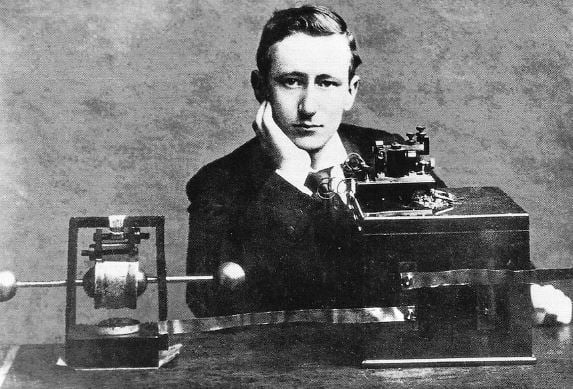 Guglielmo Marconi, an Italian inventor and electrical engineer, is famous for his pioneering work on long-distance radio transmission and for his development of a radio telegraph system. He is frequently credited as the main contributor to the invention of the radio. (Image: cavazza.it/drupal)
Guglielmo Marconi, an Italian inventor and electrical engineer, is famous for his pioneering work on long-distance radio transmission and for his development of a radio telegraph system. He is frequently credited as the main contributor to the invention of the radio. (Image: cavazza.it/drupal)
Telecommunications: The Internet
The Internet, which has been around in a big way since the end of the last century and the beginning of this one, has literally turned our existence upside down. It has revolutionized telecommunications, to the extent that it is today by far the preferred medium of everyday communication.
We use the Internet for ordering meals, buying groceries, shopping for clothes and other items, communicating with our friends, family and work colleagues, watching movies and TV series, reading about news, and listening to music.
Before the Internet existed, people got their news from TV/radio broadcasts or printed newspapers, ordering a home-delivery meal was done on the telephone, and communicating with friends was either done by landline telephone, sending telegrams and telexes, or writing letters on paper.
For people alive today, especially children and young adults, the Internet has been the greatest driver of change in the world of telecommunications. Individuals 100 years ago would have said that it was the telephone and radio. One wonders what the next revolution will be like.
Below you can see a brief timeline of the Internet, when it started to evolve, until today.
Internet Timeline
– 1969: the Advanced Research Project Agency (ARPA) went online in December, connecting four universities in the United States. It was designed for government organizations, research and education and provided a telecommunications network that linked the country in the event of a total conventional communications systems breakdown, caused by, for example, a nuclear war.
– 1972: Ray Tomlinson, a computer scientist from Cambridge, Massachusetts, introduced electronic mail (email). He used @ to distinguish between the name of the sender and network in the email address.
– 1973: TCP/IP (Transmission Control Protocol/Internet Protocol) was designed. In 1983 it became the standard for computer communication over the Internet. FTP (File Transfer Protocol), one of these protocols, allowed the user to log onto a remote computer, list files on his or her computer, and download documents from that computer.
– 1976: for the first time in history, email was used to plan presidential campaign events – by both Jimmy Carter and Walter Mondale. Queen Elizabeth II became the first head of state to send an email.
– 1982: for the first time ever, the word ‘Internet’ was used.
– 1984: establishment of DNS (Domain Name System). Network addresses became identifiable by .com, .edu and .org. The term ‘cyberspace’ was coined by William Gibson.
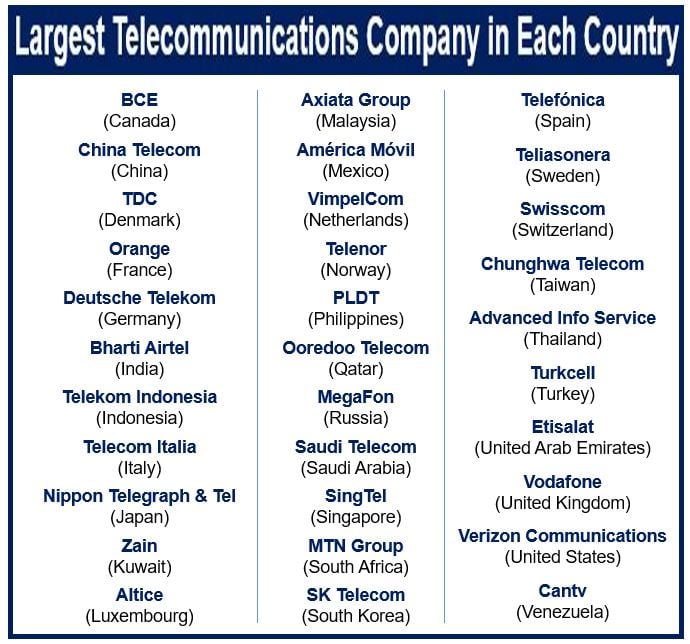 China Mobile is the largest telecommunications company in the world – it is also the biggest carrier by subscribers. (Data source: forbes.com)
China Mobile is the largest telecommunications company in the world – it is also the biggest carrier by subscribers. (Data source: forbes.com)
– 1985: America Online, which started off as Quantum Computer Services, started offering electronic bulletin boards, email, news and other information.
– 1989: a new system for distributing information on the Internet was developed by Tim Berners-Lee at the European Laboratory for Particle Physics – CERN. Berners-Lee called it the World Wide Web, also known today as the Web or WWW.
– 1990: Peter Deutsch, at McGill University in Canada, devised Archie, an archive of FTP sites.
– 1991: the University of Minnesota in the United States created the first point-and-click navigation. It called it ‘Gopher’, after the college mascot.
– 1993: Marc Andreeson, at the NCSA (National Center for Supercomputing) in the United States, developed Mosaic, which became the dominant navigating system for the web. In 1993, just 1% of all Internet traffic came from the Web.
– 1994: www.whitehouse.gov was launched. Mass marketing campaigns using email were launched for the first time. The dictionary got a new word – ‘Spamming’ and ‘Spam’. Netscape Communications was born, founded by Jim Clark and Marc Andreessen.
– 1995: Prodigy, America Online and CompuServe started providing dial-up Internet access. www.vatican.va was launched. Java was released by Sun Microsystems.
– 1996: the Internet started to become a major telecommunications medium, with forty-five million people globally using it.
– 1997: NASA’s website posted images taken by Pathfinder, a robotic spacecraft that landed a base station with a roving probe on Mars. Forty-six million hits were registered on NASA’s website in one day – a new record.
– 1998: the birth of Google, whose founders opened offices in California.
– 1999: Shawn Fanning, a college student, created Napster, a computer application that allowed people to swap music over the Internet. The number of Internet users globally tripled (compared to 1996) – reaching 150 million. Internet shopping began to become popular. By this time, ‘E-commerce’ was a common term.
– 2002: the number of people with access to the Internet globally reached 544 million.
– 2003: approximately half of all emails consisted of spam messages. Spamming became a serious problem. Apple iTunes was born, selling songs online at 99 cents each.
– 2004: online spending reached a record $117 billion, which was 26% more than in the previous year.
– 2005: the birth of YouTube.
– 2006: the number of websites globally reached 92 million.
– 2007: the world’s most popular online game – World of Warcraft – reached 9 million subscribers globally.
– 2009: the Internet celebrated its 40th birthday.
– 2010: thirty-five percent of US adults had cell phones with apps. The birth of Pinterest and Instagram. Wikileaks collaborated with media organizations to release American diplomatic documents.
– 2011: Microsoft acquired Skype for $8.5 billion. The launch of Google+. Young Egyptians used Twitter to spread the word about the Egyptian revolution. The Egyptian government responded by blocking all Internet access across the country.
– 2012: Facebook and Instagram reported that 66% and 12% of Internet users respectively were their members. Facebook user numbers reached 1 billion. E-commerce sales exceeded $1 trillion globally.
– 2013: Banking associations reported that the majority of customers banked online in the advanced economies.
– 2014: Facebook acquired Whatsapp for $19 billion.
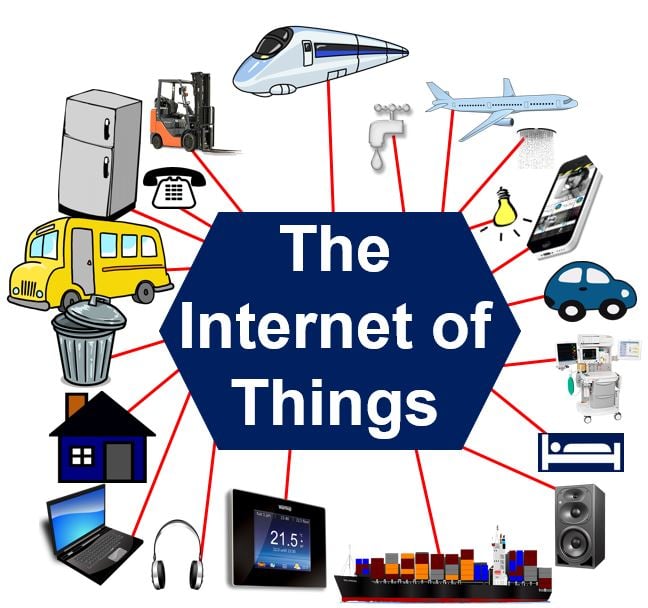 Imagine virtually everything around us being hooked up to a giant network. Our homes, refrigerators, cars, thermostats, trash cans, medical devices, music systems, public transport vehicles, airplanes, ships, telephone, and even our utilities becoming part of a huge interconnecting mesh.
Imagine virtually everything around us being hooked up to a giant network. Our homes, refrigerators, cars, thermostats, trash cans, medical devices, music systems, public transport vehicles, airplanes, ships, telephone, and even our utilities becoming part of a huge interconnecting mesh.
The Internet of things
The Internet of Things is a system of interrelated computers, mechanical and digital machines, objects, people, and animals that are fitted with unique identifiers that can transfer data over a network without the need for human-to-computer or human-to-human communication. Put simply, it is a world where gadgets, devices, animals and people are all electronically hooked up to an online network.
The Internet of Things (IoT) is rapidly becoming a feature of everyday life, thanks to the rise of interactive fitness trackers, intelligent thermostats, and the prospect of self-driving cars.
Moreover, the IoT’s expansion is fostering the development of smart cities, where interconnected devices enhance urban management, energy efficiency, and public safety.”
Such technologies – that rely on state-of-the art telecommunications – are compelling because they make the devices and gadgets around us considerably smarter and more interactive.
During the Internet revolution, telecommunications services treated their network providers as mere ‘dumb pipes’ providing bandwidth. With the Internet of Things revolution, which requires a significant increase in powerful, secure communication links, providers have the opportunity not only to play a major role but also to create value.
This perspective is shifting as network providers are increasingly recognized for their role in enabling advanced technologies like cloud computing and 5G, which are integral to the evolution of digital communication and data management.
The sensor technologies that make things ‘intelligent’ are only a part of the Internet of Things. Connecting all these machines, instruments and devices is what converts isolated pockets of technology into a telecommunications network that generates and pools information in ways that lead to incredible insights.
Video explanation
